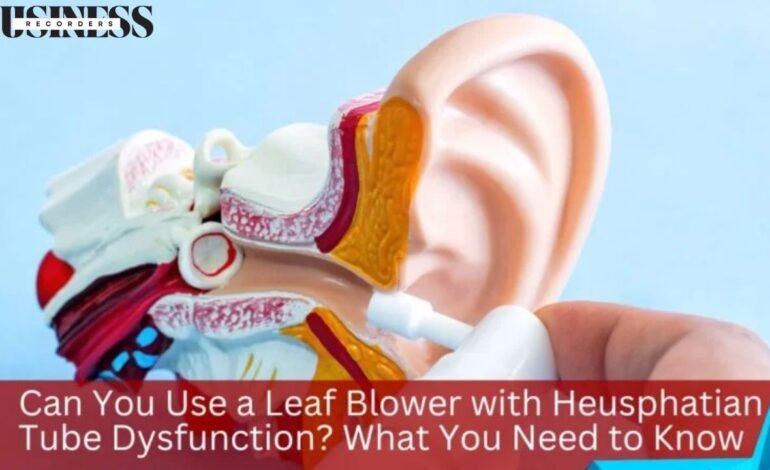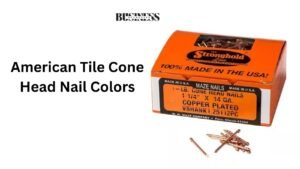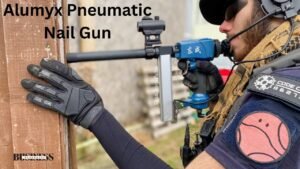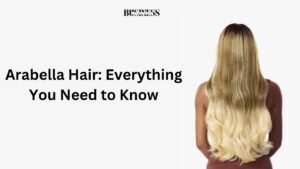
Can You Use a Leaf Blower wit heusphatian Tube Dysfunction?
Eustachian tube dysfunction (ETD) is a condition that can cause discomfort in the ears. The Eustachian tubes connect the middle ear to the throat, helping to equalize pressure. When these tubes do not work correctly, it can lead to symptoms such as ear pain, pressure, and even hearing loss. This raises a critical question for those who enjoy yard work: Can You Use a Leaf Blower wit heusphatian Tube Dysfunction? In this article, we will explore how using a leaf blower can affect ETD, safety precautions to take, alternative methods for yard work, and more.
What is Eustachian Tube Dysfunction?
Eustachian tube dysfunction occurs when the Eustachian tubes become blocked or do not open properly. This dysfunction can lead to various uncomfortable symptoms. When the Eustachian tubes fail to equalize pressure in the ears, it creates a feeling of fullness or blockage. Some common symptoms of ETD include:
- Ear Pain: Many people experience pain or discomfort in their ears, especially during activities that change pressure, such as flying or swimming.
- Popping Sounds: Individuals with ETD often hear popping or clicking sounds in their ears when swallowing or yawning.
- Hearing Issues: Some may notice temporary hearing loss or a sensation that sounds are muffled.
ETD can be triggered by several factors, including allergies, sinus infections, and colds. Environmental changes, such as shifts in weather, can also bring about symptoms. When the Eustachian tubes are not functioning as they should, it can lead to frustration and discomfort. This is especially relevant when considering activities like using a leaf blower.
How Can Leaf Blowers Affect Eustachian Tube Dysfunction?
Using a leaf blower can introduce various stressors for someone with Eustachian tube dysfunction. Leaf blowers produce loud noises and strong air currents, which can negatively impact the ears. Here’s how these factors can exacerbate symptoms related to Can You Use a Leaf Blower wit heusphatian Tube Dysfunction:
- Loud Noise: Leaf blowers can generate noise levels of around 90 decibels or more. For someone with ETD, loud sounds can create additional pressure in the ears, leading to increased discomfort. This can make symptoms feel more intense and may even lead to longer-lasting effects, such as tinnitus (ringing in the ears).
- Strong Air Pressure: The forceful air generated by a leaf blower can push against the ears. For someone with Eustachian tube dysfunction, this air pressure may feel uncomfortable and can worsen feelings of fullness in the ears.
- Vibrations: Many leaf blowers create vibrations that can be jarring. These vibrations can travel through the body and impact the ears, contributing to discomfort for those with ETD.
Understanding how a leaf blower affects the ears is crucial for making informed decisions about yard work. If you are pondering the question, Can You Use a Leaf Blower wit heusphatian Tube Dysfunction, it’s essential to weigh the risks carefully.
What Should You Do Before Using a Leaf Blower?
If you have Eustachian tube dysfunction and are considering using a leaf blower, there are several important steps to take. Here are some recommendations:
Consult a Doctor
Before using a leaf blower, consult with a healthcare provider, especially if you frequently experience symptoms of ETD. A doctor can provide guidance tailored to your specific condition, helping you understand the risks and potential precautions. This consultation can clarify whether Can You Use a Leaf Blower wit heusphatian Tube Dysfunction is a safe question for you.
Use Hearing Protection
Wearing earplugs or noise-canceling headphones is highly recommended. This protection can help reduce the volume of the leaf blower, making it more bearable. Proper hearing protection can mitigate the impact of loud noises, helping to preserve hearing health while addressing Can You Use a Leaf Blower wit heusphatian Tube Dysfunction.
Take Breaks
If you decide to use a leaf blower, take frequent breaks. Extended use can exacerbate symptoms, so giving your ears time to recover is essential. During breaks, consider engaging in activities that relieve ear pressure, such as yawning or swallowing.
Stay Hydrated
Staying hydrated is crucial for maintaining the health of your Eustachian tubes. Drinking plenty of water can help keep the tubes functioning properly and may alleviate some symptoms associated with ETD. It’s a simple yet effective way to support ear health when asking, Can You Use a Leaf Blower wit heusphatian Tube Dysfunction?.
Use the Right Equipment
Consider choosing a leaf blower that is quieter or designed with features that reduce the intensity of air pressure. Some models are specifically engineered to operate at lower noise levels, which may be easier on the ears of someone with ETD.
Warm Up Your Ears
Before starting the leaf blower, perform simple exercises that help equalize ear pressure. Yawning or swallowing can encourage the Eustachian tubes to open, which may reduce discomfort while you work.
By taking these precautions, you can help minimize the risks associated with using a leaf blower if you have Eustachian tube dysfunction.
Are There Alternative Ways to Clear Leaves?
If using a leaf blower is too uncomfortable or risky, several alternative methods for clearing leaves are gentler on the ears. Here are some effective options:
Rake the Leaves
Raking leaves is a traditional method that allows you to gather leaves without the noise and pressure of a leaf blower. While it may take longer, raking is a peaceful activity that allows you to control the pace. You can take breaks whenever you need to and avoid loud sounds altogether.
Use a Broom
For smaller areas like patios or walkways, using a broom can be a practical solution. It is quieter than a leaf blower and can still help you effectively clear leaves without creating additional pressure on your ears. Plus, it gives you a good workout while considering Can You Use a Leaf Blower wit heusphatian Tube Dysfunction.
Mulching Mower
If you have a lawnmower, consider using a mulching mower. This type of mower can chop leaves into smaller pieces, allowing them to decompose naturally on the lawn. Not only does this method save time, but it also avoids the issues associated with noise and air pressure.
Vacuum
Leaf vacuums are another alternative that can be effective for cleaning up leaves. These devices are generally quieter than leaf blowers and often have attachments to make the task easier. They can remove leaves without the forceful air blast, making them a good option for those asking, Can You Use a Leaf Blower wit heusphatian Tube Dysfunction.
Hire Help
If yard work becomes too strenuous, consider hiring a lawn care service. This option allows you to maintain your yard without putting stress on your ears. Many lawn care professionals have specialized equipment designed to be quieter and more efficient.
Using these alternatives can help you keep your yard tidy without risking discomfort or worsening your Eustachian tube dysfunction.
What Are the Pros and Cons of Using a Leaf Blower with Eustachian Tube Dysfunction?
Understanding the pros and cons of using a leaf blower with Eustachian tube dysfunction can help you make an informed decision. Here’s a table that outlines the benefits and drawbacks:
| Pros | Cons |
| Quickly clears leaves from the yard | Loud noise may worsen ear symptoms |
| Saves time compared to manual methods | Strong air pressure can cause discomfort |
| Effective for large areas | Potential for hearing loss over time |
| Can be more efficient | May lead to increased ear pressure |
While leaf blowers are efficient tools, the potential risks for those with Eustachian tube dysfunction may outweigh the benefits. It’s essential to weigh these factors carefully when considering Can You Use a Leaf Blower wit heusphatian Tube Dysfunction.
What Should You Look for in a Leaf Blower?
If you decide to use a leaf blower despite having Eustachian tube dysfunction, certain features can make your experience more comfortable. Here are some factors to consider when choosing a leaf blower:
Noise Level
Look for a model with a lower decibel level. Many manufacturers now provide information on the noise output of their products. Choosing a quieter blower can significantly reduce discomfort and the risk of exacerbating your symptoms while addressing the question, Can You Use a Leaf Blower wit heusphatian Tube Dysfunction.
Weight and Size
A lightweight leaf blower can be easier to handle and less straining on your body. Choose a model that is comfortable for you to use, as this will encourage you to take breaks and manage your yard work effectively.
Vibration Dampening
Some leaf blowers are designed with vibration dampening technology. These models can reduce the jarring effects of using a blower, making it more comfortable for those with ETD.
Adjustable Speeds
A blower with adjustable speeds allows you to control the airflow. By using a gentler setting, you can reduce the force on your ears while still being effective in clearing leaves.
Battery vs. Gas
Battery-operated leaf blowers tend to be quieter than gas-powered ones. If you are concerned about noise and air pressure, a battery-powered model might be the better choice.
Reviews and Recommendations
Before purchasing a leaf blower, read reviews from other users. Look for comments from individuals with similar health concerns. This can provide valuable insights into which models are more suitable for people with Eustachian tube dysfunction and can answer the question, Can You Use a Leaf Blower wit heusphatian Tube Dysfunction.
By considering these features, you can choose a leaf blower that is less likely to cause discomfort while still being effective for your yard work.
When Should You Avoid Using a Leaf Blower?
If you have Eustachian tube dysfunction, there are specific situations when using a leaf blower might not be advisable. Here are some instances to consider:
During Symptomatic Episodes
If you are experiencing active symptoms of ETD, it’s best to avoid using a leaf blower altogether. Symptoms like ear pain and pressure can intensify when exposed to loud noises and air pressure, making it uncomfortable.
After a Cold or Allergies
If you’ve recently had a cold or allergy flare-up, your Eustachian tubes may be more sensitive. Using a leaf blower during this time can lead to complications, so consider waiting until your symptoms improve.
In Windy Conditions
Wind can exacerbate the effects of using a leaf blower. The combination of a leaf blower’s air pressure and outdoor wind can create additional discomfort for those with ETD. If it’s a windy day, it’s better to postpone your yard work.
Extended Use
Using a leaf blower for extended periods can be tiring and may lead to increased ear pressure. If you plan to use one, keep your sessions short and take regular breaks.
By avoiding these situations, you can help protect your ears and manage your Eustachian tube dysfunction effectively.
Conclusion
In summary, the question Can You Use a Leaf Blower wit heusphatian Tube Dysfunction is complex and requires careful consideration. While leaf blowers can efficiently clear leaves, they also pose risks for individuals with ETD, including loud noises and strong air pressure. It’s vital to consult a healthcare provider before using a leaf blower, utilize proper protection, and consider alternatives for yard work.
By taking these steps and listening to your body, you can maintain your yard while prioritizing your ear health. Always remember that health should come first, even when tackling yard maintenance tasks.












